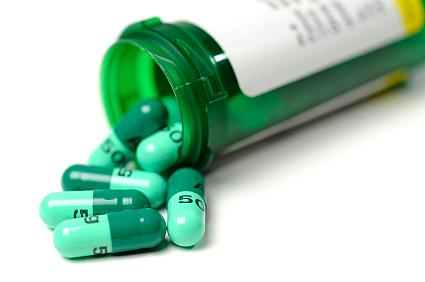Q&A with Maia Szalavitz: Going Beyond Victims and Pushers for Pain Stories

After I wrote a series of posts about some of the ethical issues surrounding pain management, journalist Maia Szalavitz contacted Reporting On Health with a complaint: "How come you guys never cover the other side in the pain issue?" She was right. Antidote has written repeatedly about painkiller addiction, pill mills, and, most recently, ethicists being investigated for their ties to the pharmaceutical industry. But we haven't written much about some of the issues she raised after asking that question.
Currently a writer for Time, Szalavitz also has written for the New York Times, Huffington Post, Psychology Today, Mother Jones and other major publications. She has authored and co-authored five books, including Born for Love: Why Empathy is Essential – and Endangered; Help at Any Cost: How the Troubled-Teen Industry Cons Parents and Hurts Kids; The Boy Who Was Raised as a Dog: And Other Stories from a Child Psychiatrist's Notebook--What Traumatized Children Can Teach Us About Loss, Love, and Healing; and Lost Boy. I interviewed her via email. The interview has been edited for space and clarity. The first part is below. The second part will run next week.
 Q: You have written about what you see as an epidemic of media stories about painkiller addiction and a scarcity of stories about the ways opioids can bring relief to chronic pain patients. What makes you say that?
Q: You have written about what you see as an epidemic of media stories about painkiller addiction and a scarcity of stories about the ways opioids can bring relief to chronic pain patients. What makes you say that?
A: First of all, how many times do you see pain patients who aren't addicted represented in the coverage? That's actually the majority of patients on these drugs, one that is silent. Secondly, virtually all of the coverage portrays the situation as though doctors and drug companies are "making" patients into addicts and therefore, that cracking down on use of opioids for chronic pain will fix the situation. The real problem is that young people want to get high on opioids-even then though, only around 15% get addicted and for adults in middle age without a prior history of addiction, the rates are less than 1%, according to a review of research on over 2,500 chronic pain patients.
But the media likes innocent victims and evil drug pushers- and the drug companies have done some terrible things; I'm not defending them. However, just because drug companies may be evil doesn't mean they can't sometimes be right- and just because some pain patient advocates may have naively taken money from them doesn't mean they are just insincere and deluded dupes whose perspective should be discarded. The crackdown is making pain patients suffer, and it isn't even an effective way of fighting addiction.
Q: But those who support the crackdown claim that we don't even know if opioids actually help chronic pain.
A: Those claims are disingenuous at best. Because the FDA requires only short-term data on drugs for approval, long-term data doesn't exist for most commonly used drugs. This is not unique to opioids. Of course more data is needed always, but humans have a centuries' long history of using opioids for pain relief and most importantly, for many people, there are no alternatives that help. Do they work for everyone? No. But they very clearly do work for many people and to ignore this is to condemn them to life in agony, even if they don't work perfectly.
Because of human diversity, it's rather like the antidepressant debate. Not all antidepressants are placebo. Antidepressants don't make all people who take them suicidal or homicidal. Nor are antidepressants a miracle cure for everyone. But all three are true for some people, and this makes the data really difficult to interpret. That shouldn't mean we say absence of evidence is evidence of absence.
Q: Are you taking issue with all the government reports – state and federal – documenting the rise in painkiller abuse?
A: I'm not saying that there hasn't been a rise in misuse of painkillers (abuse is a stigmatizing term that, research shows, actually pushes medical professionals to prefer punishment to treatment).
Nonetheless, this hasn't been driven by doctors turning patients into addicts. Most misusers of pain medications are pre-existing drug addicts. For example, a 2007 study in The American Journal of Psychiatry found that 78% of those addicted to Oxycontin had previously been in rehab and the same percentage never had a legit prescription for the drug. The same is true for people who overdose. A 2008 study in the Journal of the American Medical Association found that 95% show clear signs of drug misuse and addiction, like snorting or shooting drugs meant to be swallowed or the presence of street drugs in their systems. Most teens using the drugs don't get them from doctors: Over 80% get from family or friends. And most pain patients aren't teens. They are middle-aged, and if you haven't become an addict before middle age, the odds of doing so are vanishingly low.
Q: I'm not sure we can just take people with addictions out of the equation. They are patients, too, and deserve a broader approach to treatment than just a stack of pre-signed prescription forms, which is what medical boards have found in some pain doctors' offices during investigations. These addictions may have started with an attempt to self-medicate a mental illness or a pain problem years ago. Why should we discount their experiences?
A: I'm not saying we should discount their experiences- I'm an ex-addict myself!
However, the "treatment" we're offering instead actually increases harm. Typically, when doctors discover that addicts have been scamming them for pain medications, they throw them out of their practices. This is not addiction treatment! Indeed, a study in North Carolina found an increase in overdose deaths when they put a pill mill out of business. It is assumed that cutting off an addict's supply will cure the addiction or that punishment will. Data does not support either contention. Even in prison, addicts get drugs. Pain patients are the ones who suffer when legitimate supplies are cut off.
The irony is that the treatment with the best evidence for efficacy for those who are addicted would actually be a prescription for an opioid, either buprenorphine or methadone, and often for long term maintenance depending on severity.
So, why aren't these doctors allowed to simply say, "Let's be real. You have an addiction problem." They could then prescribe an opioid for them, referring them for counseling and additional services elsewhere if needed, though research shows that adding these services actually doesn't improve the results from simply prescribing!
There's a bizarre disconnect between what we do and what we know would help people, and it comes down to the fact that we don't look at this problem at all rationally.
Next: How to do your homework when writing about pain medicine
Q&A with Maia Szalavitz, Part 2: Understanding Addiction Through Science - and Personal Experience

